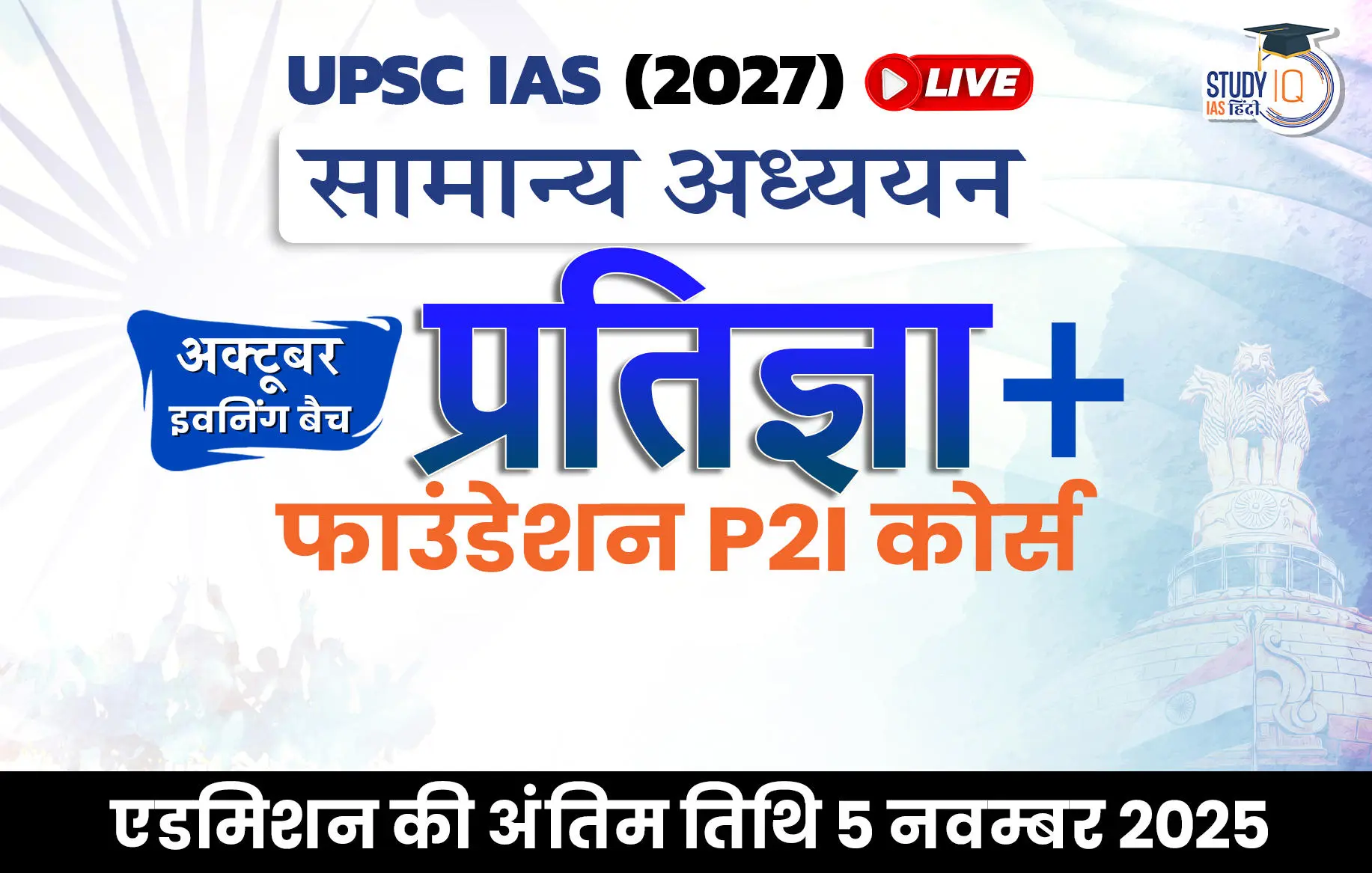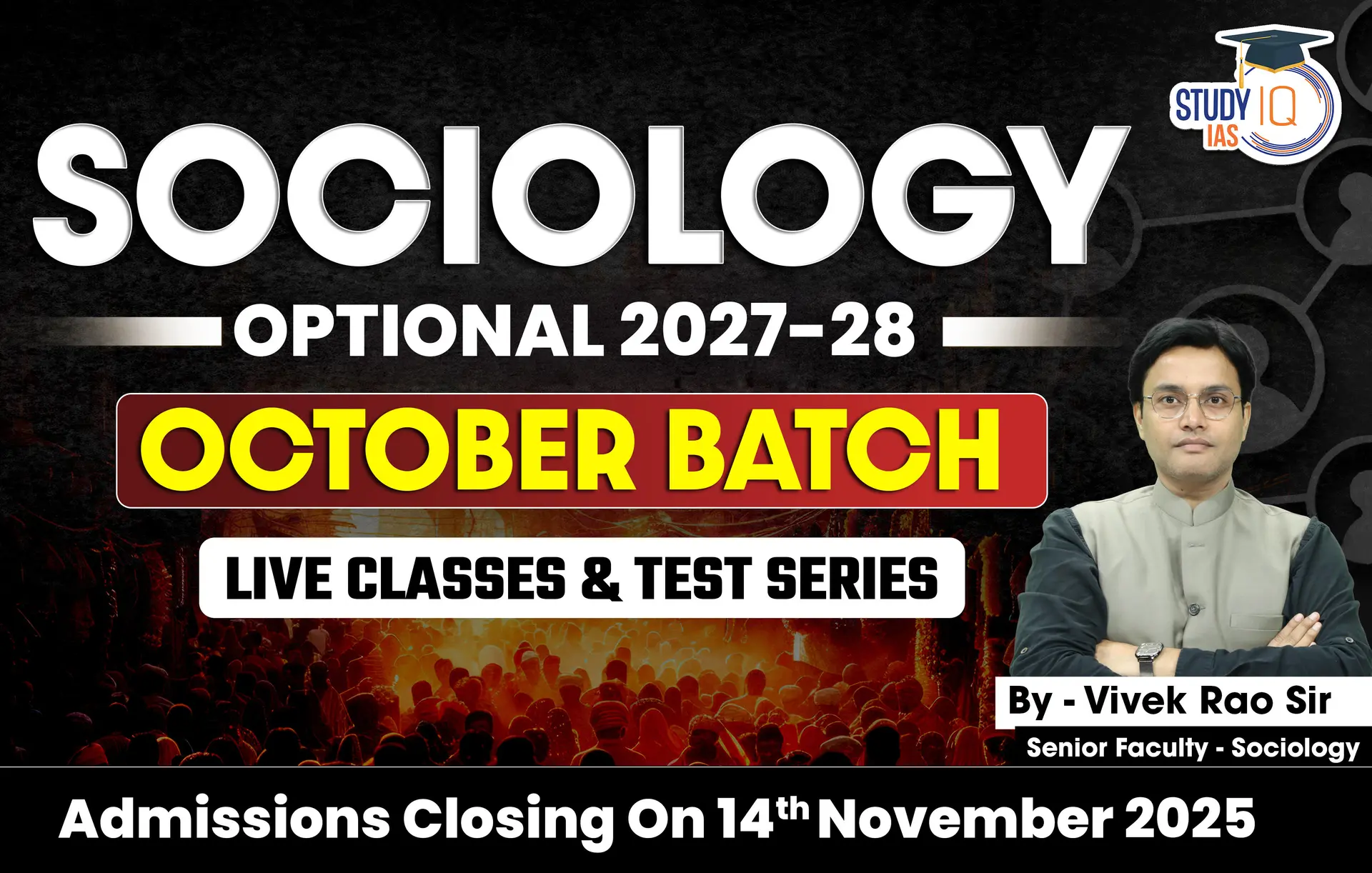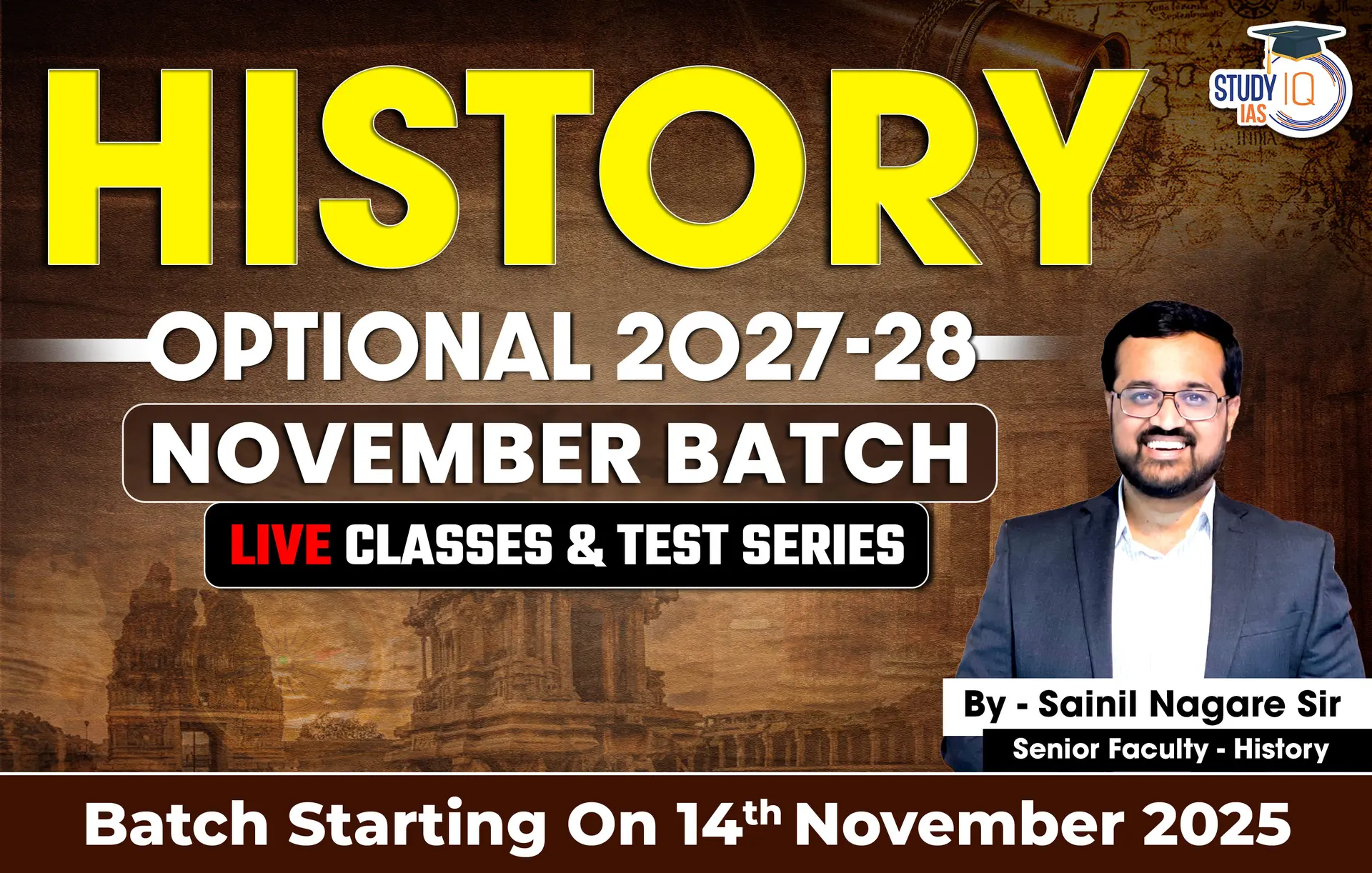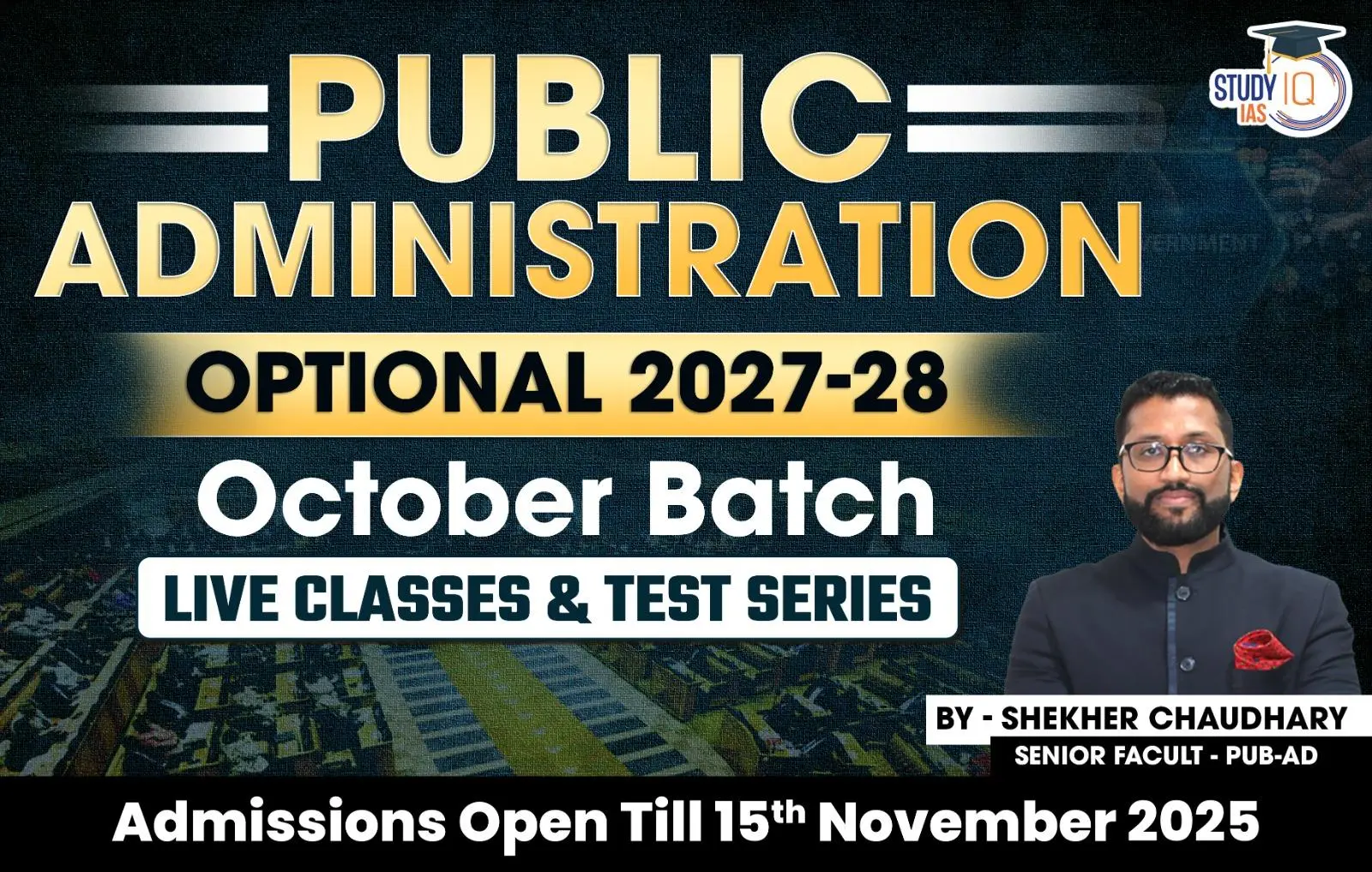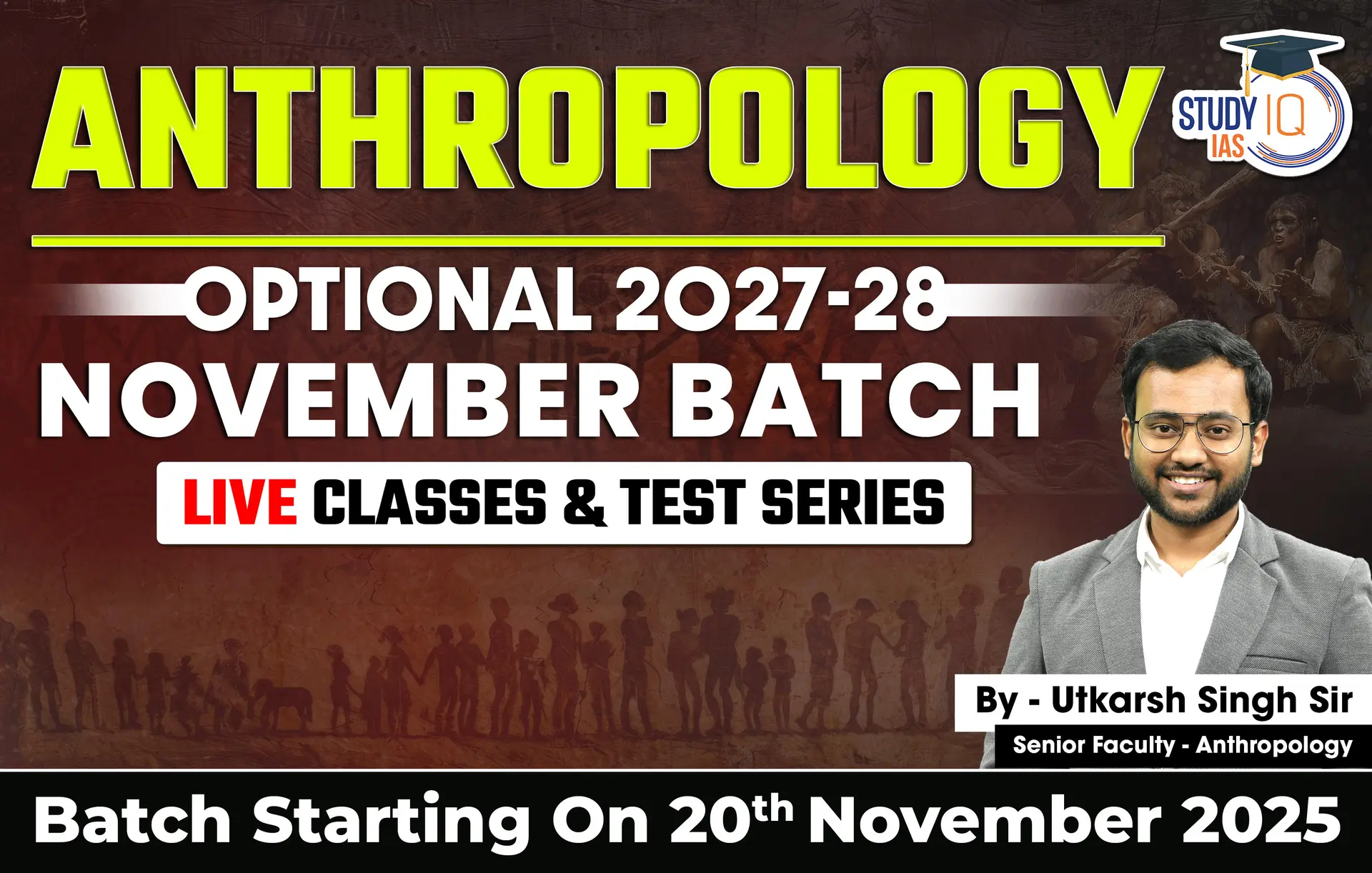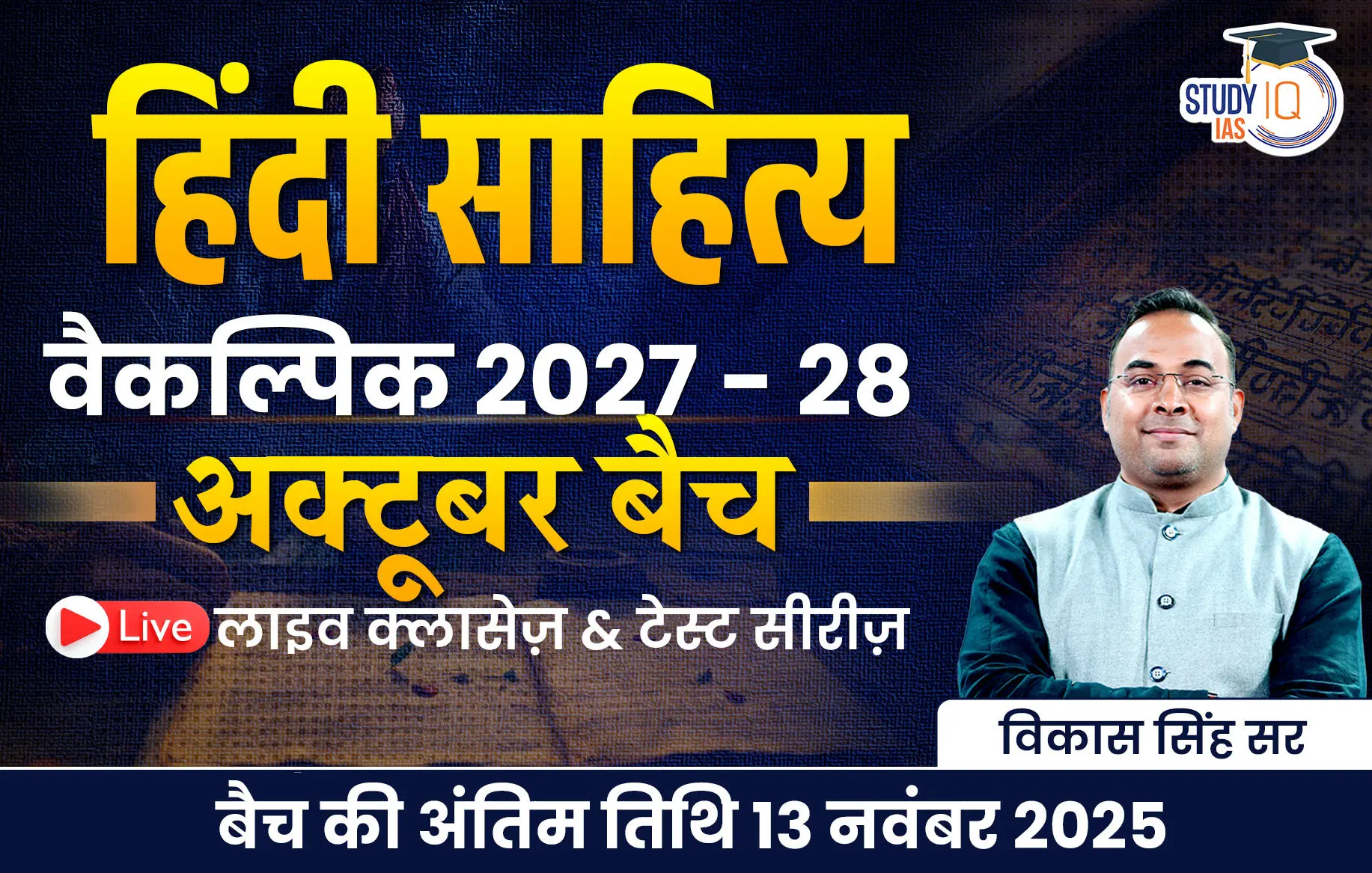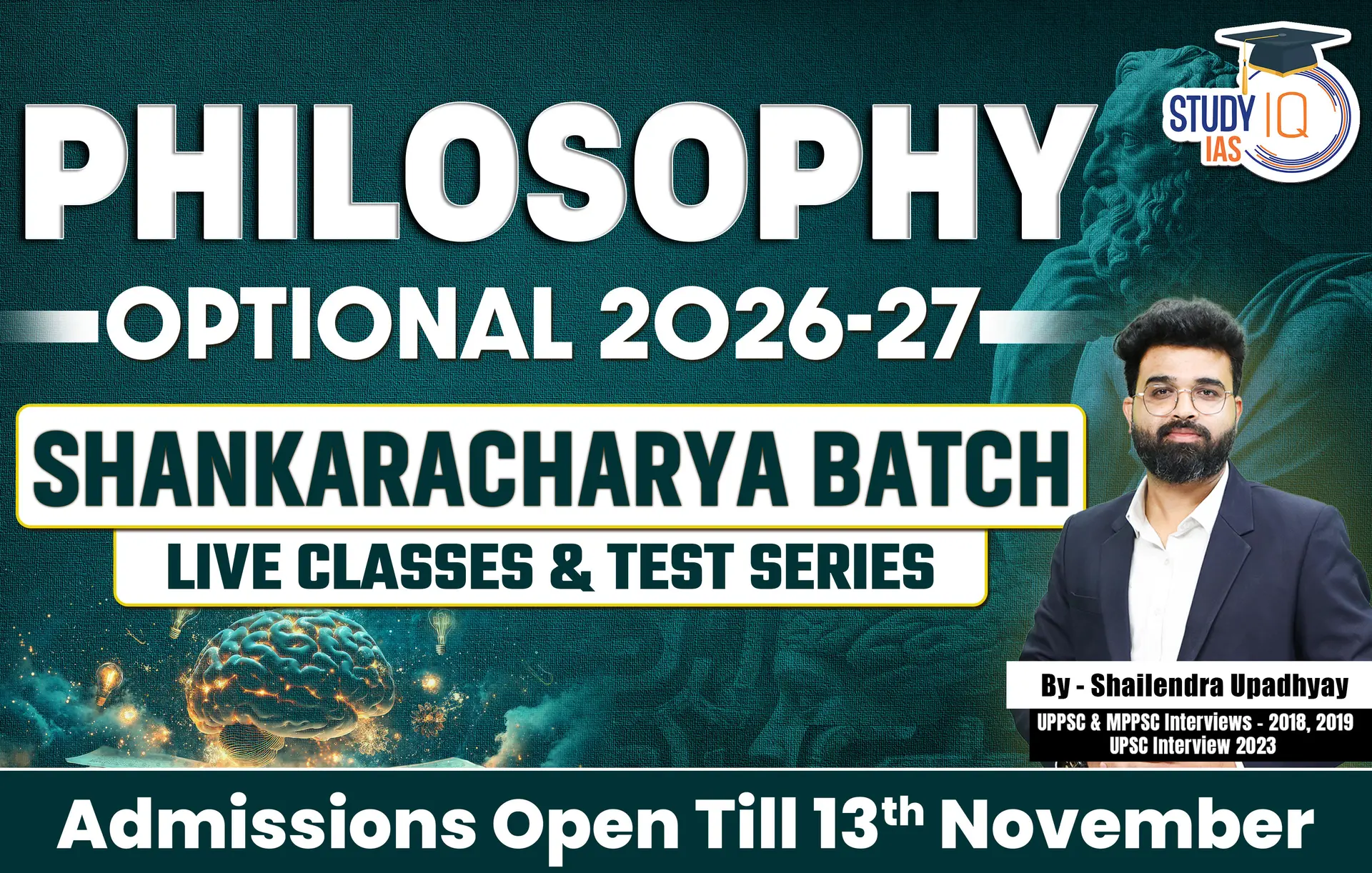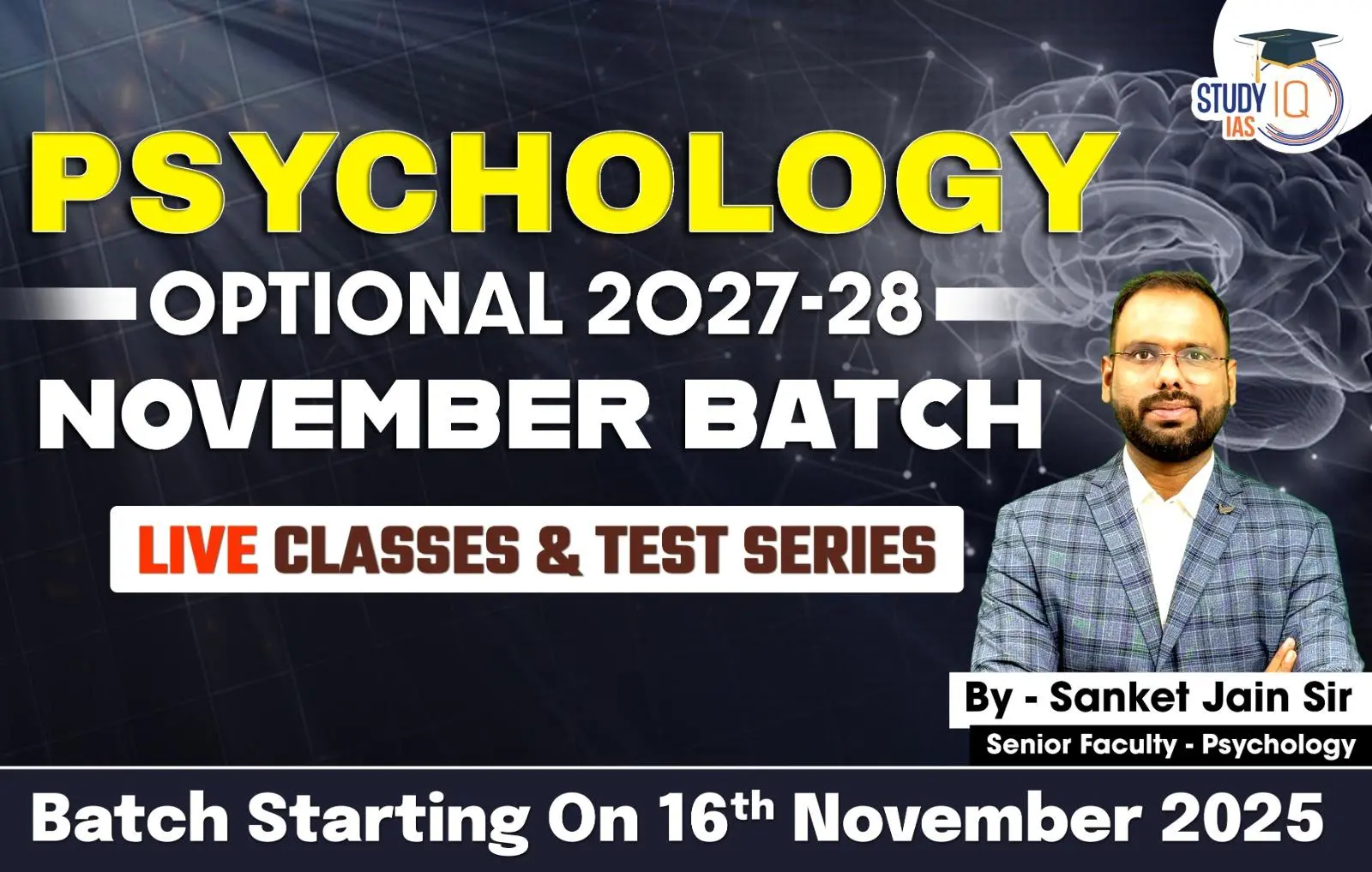Table of Contents
NHRC
Context: The National Human Rights Commission (NHRC) at a conference in Geneva will determine if India’s human rights organisation will maintain its “A status.”
More In News

- The decision over whether the NHRC is given an A or B rating will affect its ability to vote at the UN Human Rights Council and some UNGA bodies.
About National Human Rights Commission (NHRC)
- Establishment: 12th October, 1993 under the Protection of Human Rights Act of 1993.
- It symbolises India’s commitment to advancing and safeguarding human rights.
- Composition & Qualifications:
- Chairperson: Must be a former Chief Justice of India or a Judge of the Supreme Court.
- Five Members:
- One must be or have been a Judge of the Supreme Court.
- One must be or have been a Chief Justice of a High Court.
- Three members should have knowledge of or practical experience in human rights issues, with at least one being a woman.
- Seven Deemed Members: Include the Chairpersons or Chief Commissioners of:
- National Commission for Backward Classes
- National Commission for Minorities
- National Commission for Scheduled Castes
- National Commission for Scheduled Tribes
- National Commission for Protection of Child Rights
- National Commission for Women
- Chief Commissioner for Persons with Disabilities
- Appointment Process: The President of India appoints the chairperson and members based on a committee’s recommendations, which includes:
- Prime Minister
- Speaker of the Lok Sabha
- Minister of Home Affairs
- Leaders of the Opposition in the Lok Sabha and Rajya Sabha
- Deputy Chairman of the Rajya Sabha
- Term: The Chairperson or the Members of the National Human Rights Commission holds office for a term of 3 years or until they attain the age of 70 years, whichever is earlier.
- Removal Grounds: The chairperson or any member can be removed by the President due to proven misbehaviour or incapacity following a Supreme Court inquiry.
- Removal may also occur if the individual:
- Becomes insolvent.
- Engages in paid employment outside their duties during their term.
- Is deemed unfit due to mental or physical infirmity.
- Is declared of unsound mind by a competent court.
- Is convicted and sentenced for an offence that, in the opinion of the President, involves moral turpitude.
- Functions of NHRC
- Inquiry into Violations: Investigates complaints about human rights breaches, abetment, or negligence by public servants.
- Court Intervention: Can intervene in court proceedings involving human rights allegations with the court’s approval.
- Institution Visits: Inspects jails and other state-controlled facilities to assess and recommend improvements for the living conditions of inmates.
- Review of Safeguards: Reviews constitutional and legal protections for human rights and suggests ways for their effective implementation.
- Addressing Inhibitors: Examines issues like terrorism that impact human rights enjoyment and proposes suitable corrective actions.
- Treaty Studies: Analyses international human rights treaties and instruments to offer recommendations.
- Human Rights Research: Conducts and promotes research in the human rights field.
- Promoting Awareness: Enhances human rights awareness and literacy through education and public outreach.
- Supporting NGOs: Supports the activities of non-governmental organisations and institutions working to advance human rights.
- Powers of NHRC:
- Civil Court Powers: Possesses the same powers as a civil court under the Code of Civil Procedure, 1908, during investigations, including summoning witnesses, document production, and evidence reception.
- Compensation Recommendation: Authorised to recommend compensation for victims of human rights violations.
- Legal Enforcement: Can approach the Supreme Court or High Court to enforce human rights protections.
- Suo Moto Cognizance: Empowered to independently recognize and act on human rights violations without needing a formal complaint.
- Amendment So far: Amended by the Protection of Human Rights (Amendment) Act, 2006, and Human Rights (Amendment) Act, 2019.
- Removal may also occur if the individual:
Protection of Human Rights (Amendment) Bill 2019 |
|
Eligibility for Chairperson: The amendment made a person who has been a Judge of the Supreme Court eligible to be appointed as Chairperson of the NHRC, in addition to the person who has been the Chief Justice of India. Increase in Members: The number of members of the commission with knowledge of human rights issues was increased from two to three, with at least one member required to be a woman. Deemed Members: The Chairperson of the National Commission for Backward Classes, the Chairperson of the National Commission for the Protection of Child Rights, and the Chief Commissioner for Persons with Disabilities were included as deemed Members of the Commission. Term of Office: The term of the Chairperson and Members of the Commission and the State Commissions was reduced from five to three years, and they are now eligible for re-appointment. Eligibility for State Commission Chairperson: A person who has been a Judge of the High Court is also made eligible to be appointed as Chairperson of the State Commission, in addition to the person who has been the Chief Justice of the High Court. Powers of Secretary-General: The Secretary-General of the NHRC and the Secretary of a State Human Rights Commission (SHRC) can exercise all administrative and financial powers, subject to the respective chairperson’s control. Union Territories: The amendment conferred upon State Commissions the functions relating to human rights being discharged by Union territories, except for the Union territory of Delhi, which will be dealt with by the NHRC. |
About Global Alliance of National Human Rights Institutions
| Aspect | Details |
| Origin | Founded in 1993 in Tunis, Tunisia as the International Coordinating Committee; renamed GANHRI in 2016. |
| Headquarters | Geneva, Switzerland |
| Vision | Aims for a world where everyone fully enjoys their human rights. |
| Tripartite Partnership | Collaborates with the United Nations Development Programme (UNDP) and Office of the United Nations High Commissioner for Human Rights (OHCHR) to strengthen National Human Rights Institutions (NHRIs) globally. |
| Membership | Consists of 115 NHRIs from all regions of the world. |
| Unique Feature | Only non-UN body with an accreditation system based on 1993 Paris Principles giving access to the UN. |
| Paris Principles | Set of international standards for NHRIs, adopted by the UN General Assembly in 1993. |
| Accreditation Rating | Managed by a subcommittee with an A-status NHRI representative from each regional network. |
| Sub-Committee on Accreditation | Handles peer review for initial accreditation and re-accreditation every five years. |
| Status Descriptions | ● A Status: Full compliance with Paris Principles, can vote and hold office.
● B Status: Partial compliance, can attend meetings but no voting or office holding. |
Anticyclones and heat waves
Context: While global warming causes a general rise in temperatures, other factors like El Niño and anticyclonic circulations can create unique local effects.
The Case of the 2023 Heatwaves in India
- The waning phase of the strong El Niño event of 2023 led to global temperature increases, yet localised cooler temperatures were recorded across parts of Pakistan, India, and West Bengal during March.
Heatwaves and Anticyclones
- Global warming can create unique local features like persistent anticyclonic circulations that intensify heatwaves.
- These high-pressure domes trap heat, causing extreme temperatures.
- Example: Anticyclones over the North Indian Ocean are linked to the unusual heat in India this year.
Understanding Anticyclones

- An anticyclone is a large-scale weather system characterised by a high-pressure centre, around which air circulates in a clockwise direction in the Northern Hemisphere and counterclockwise in the Southern Hemisphere.
- Anticyclones are the polar opposite of Cyclones.
- High Pressure: Anticyclones are associated with areas of high atmospheric pressure, where the air is descending.
- This high pressure inhibits the formation of clouds, leading to clear skies.
- Weather Conditions: The weather in an anticyclone is generally stable and dry.
- In the summer, this can lead to heatwaves, while in the winter, it can bring cold conditions with frost and possibly fog due to the clear skies and calm winds.
- Wind Circulation: The winds in an anticyclone flow outward from the high-pressure centre.
- Due to the Coriolis effect, the wind direction is clockwise in the Northern Hemisphere and counterclockwise in the Southern Hemisphere.
- Isobars: On weather maps, anticyclones are indicated by closed isobars (lines of equal atmospheric pressure) that are spaced far apart.
- This spacing indicates that the winds within an anticyclone are generally light and the change in pressure is gradual.
- Temperature Inversions: Anticyclones can cause temperature inversions, where the temperature increases with altitude rather than decreases.
- This can trap pollutants and lead to haze or smog, especially in urban areas.
- Longevity: Anticyclones can persist for extended periods, sometimes lasting for weeks, which can lead to prolonged dry spells or heat waves in the summer and cold, frosty conditions in the winter.
- Strength: The strength of these anticyclones determines the intensity of heatwaves.
- Strong anticyclones bring dry and hot weather.
- Weaker ones produce milder weather
2023 Heatwaves and Contributing Factors
- The unusual warmth of 2023 is not fully explained by El Niño alone.
- El Niño’s diminishing effect on the Indian Easterly Jet (IEJ) can lead to stronger anticyclones, causing longer and more intense heatwaves.
- This year’s heatwaves are likely a combination of:
- Warmer temperatures due to El Niño.
- Unexplained additional warming in 2023.
- Strong and persistent anticyclone.
Importance of Background Conditions for Predictions
- Understanding the background conditions (e.g., cool seasonal temperatures, strong anticyclone) is crucial for accurate heat wave predictions.
- India’s Meteorological Department (IMD) can leverage this information to improve early warnings.
Early Warning Systems
- The World Meteorological Organisation’s Subseasonal-to-Seasonal Predictions project promotes a “ready-set-go” early warning system.
- India actively participates in this project and has made significant progress in prediction accuracy.
- The “ready-set-go” system involves three stages:
- Ready: Seasonal outlook based on background state (global warming, El Niño) for disaster preparedness.
- Set: Subseasonal predictions (weeks 2-4) for resource allocation and hotspot identification.
- Go: Short-term forecasts (days 1-10) for initiating disaster management actions.
Challenges and the Road Ahead
- While India’s prediction and early warning systems are improving, there’s a need to:
- Enhance location-specific weather predictions.
- Build resilience for the future through better long-term predictions (e.g., 10-year timescales).
- Effective disaster management requires coordinated efforts from national to local levels, with trained and engaged communities.
Microsoft’s SLM
Context: Microsoft launched the latest ‘lightweight’ AI model, Phi-3-mini, which represents a significant advancement in language model technology.
About Phi-3-mini
- Phi-3-mini is a streamlined version of larger AI models that has 3.8 billion parameters, a measure of its size and complexity.
- Despite being smaller in scale, it is an instructive-tuned model that can respond directly to user instructions, reflecting the move toward more user-centric AI applications.
- It is the first model in its class to incorporate a knowledge window, which allows it to recall information during a session of up to 128,000 tokens, enhancing its performance and data handling.
- Phi-3-mini’s Capabilities:
- Phi-3-mini boasts performance levels comparable to larger models while being of the same size and expertise across various benchmarks.
- It has an increase in language, reasoning, coding, and maths skills, allowing for a wide range of analytical and logical tasks.
- It also requires less computational power and has better latency.
- With longer context windows, Phi-3-mini can handle extensive interactive tasks, analyse large texts, and comprehend complex documents, web pages, and code.
- Microsoft claimed that Phi-3-mini demonstrates strong reasoning and logic capabilities, making it ideal for analytical tasks.
What Are SLMs, and What Can They Do?
- SLMs, or Small Language Models, are less comprehensive versions of Large Language Models (LLMs).
- These smaller AIs are more affordable and environmentally friendly.
- They are also more efficient and practical for use in devices with less computing power, like laptops and smartphones.
- SLMs are trained using a more focused approach, targeting efficiency and accuracy with extensive training and fine-tuning tasks.
- SLMs, like the Phi-3-mini, can perform diverse functions due to their compact size, which allows for quicker processing, making them more responsive and suited for real-time applications, such as virtual assistants and chatbots.
- These models are beneficial for developers, organisations, and research groups with limited budgets, enabling them to engage in efficient computing.
Benefits of SLMs Compared to LLMs
- More cost-effective to develop and run.
- Perform well on smaller devices (laptops, smartphones).
- Faster inference speed and lower latency.
- Better suited for resource-constrained environments (on-device and offline use).
- Ideal for cost-sensitive applications and simpler tasks.
- Can be specialised for specific tasks through fine-tuning.
Effective Exchange Rate
Context
- Between April 2014 and April 2024 the rupee has depreciated by 27.6% against the US dollar, from Rs 60.34 to Rs 83.38.
- This is slightly higher than the depreciation experienced from April-end 2004 to April-end 2014, where the rupee fell by 26.5% from Rs 44.37 to Rs 60.34 against the dollar.
Effective Exchange Rate (EER)
- The strength of the rupee cannot solely be judged against the US dollar, as India engages in trade with various countries.
- Thus, the rupee’s value is also determined by its Effective Exchange Rate (EER), which takes into account a basket of currencies from India’s major trading partners.
- The EER is measured by an index similar to the consumer price index (CPI).
- The CPI is the weighted average retail price of a representative consumer basket of goods and services for a given month or year, relative to a fixed base period.
- The EER is an index of the weighted average of the rupee’s exchange rates vis-à-vis the currencies of India’s major trading partners.
- The currency weights are derived from the share of the individual countries to India’s total foreign trade, just as the weights for each commodity in the CPI are based on their relative importance in the overall consumption basket.
Two Measures of EER

| Metric | Nominal Effective Exchange Rate (NEER) | Real Effective Exchange Rate(REER) |
| Definition | The weighted average of the rupee’s exchange rates against a basket of currencies. | NEER adjusted for inflation differentials between India and its trading partners. |
| Adjustment for Inflation | No adjustment for inflation. | Adjusts for inflation to reflect the ‘real’ value of the rupee. |
| Base Year and Value | 2015-16 with a base value of 100. | 2015-16 with a base value of 100. |
| Significance of Increase | Indicates an appreciation of the rupee against the basket of currencies. | Indicates an appreciation of the rupee in ‘real’ terms, factoring in inflation. |
| Significance of Decrease | Indicates a depreciation of the rupee against the basket of currencies. | Indicates a depreciation of the rupee in ‘real’ terms, considering inflation. |
| Indices Construction | RBI constructed indices against a basket of six currencies and another of forty currencies.
● 6 Currencies: Composed of the US dollar, the euro, the Chinese yuan, the British pound, the Japanese yen and the Hong Kong dollar. |
Based on NEER, but adjusted for relative inflation rates. |
| Representation | Reflects the external value of the rupee. | Reflects the purchasing power and competitiveness of the rupee. |
| Changes from 2004-05 to 2023-24 | ● From 2004-05 to 2023-24, the rupee’s NEER has dropped by about 32.2% for the 40-currency basket and by 40.2% for the 6-currency basket.
● Conversely, against the US dollar, the rupee fell by 45.7% during this time. |
Strengthened in real terms, above 100 (except 2013-14). |
| Implications | Purely indicates how the currency is performing internationally without domestic context. | REER above 100 suggests potential overvaluation, making exports costlier and imports cheaper. |
Conclusion
- While the rupee weakened against the US dollar, its depreciation against a wider basket of currencies (EER) is lower.
- However, the rupee’s REER suggests it might be overvalued, potentially affecting export competitiveness.
Examples, Case Studies and Data For Value Addition
- Same- Sex Marriages (GS 1): Iraq’s parliament has passed a bill criminalising same-sex relationships with jail terms of between 10 and 15 years purportedly to uphold religious values.


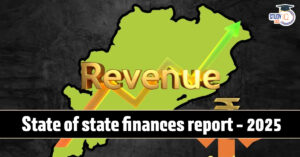 State of State Finances Report 2025: Key...
State of State Finances Report 2025: Key...
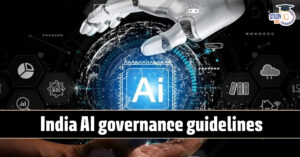 India AI Governance Guidelines 2025: Ena...
India AI Governance Guidelines 2025: Ena...
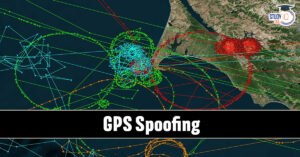 GPS Spoofing: Meaning, Working, Types, I...
GPS Spoofing: Meaning, Working, Types, I...

